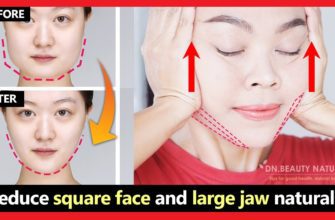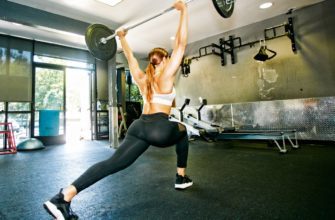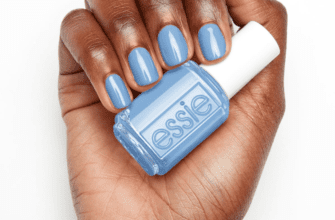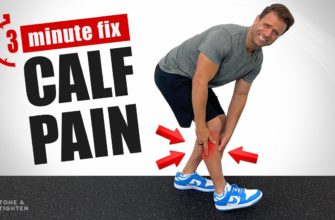Are you ready to embark on a journey towards achieving slender and well-defined legs? Look no further! In this comprehensive guide, we will unveil a compilation of ten exceptional exercises that are specifically designed to transform your lower body into a masterpiece of elegance and strength.
Step into a world of targeted workouts and discover a plethora of routines that are tailor-made to reshape your thighs, calves, and glutes. These meticulously curated exercises will help you carve out the contours you desire while boosting your overall fitness levels.
Prepare to discover the secrets to igniting your muscles, igniting your metabolism, and revitalizing your confidence. Each exercise featured in this article has been carefully selected to cater to individuals of all fitness levels, whether you’re a beginner or a seasoned gym-goer seeking a fresh challenge. With our expert guidance and unwavering determination, you’ll soon witness the remarkable transformation your legs are capable of.
- Squats: Burn Fat and Sculpt Beautiful Legs
- Mastering the Perfect Squat
- Variations to Keep Your Workouts Interesting
- Curtsey Lunges
- Jump Squats
- Sumo Squats
- Bulgarian Split Squats
- Step-Ups
- Walking Lunges
- Lunges: Strengthen and Define Your Leg Muscles
- The Basics of a Proper Lunge
- Exploring Different Types of Lunges
- Step-Ups: Step Your Way to Shapely Lower Body
- How to Perform Step-Ups Correctly
- Calf Raises: Sculpt Your Calves and Achieve the Perfect Leg Shape
- Questions and answers
Squats: Burn Fat and Sculpt Beautiful Legs
Squats are a powerful exercise that can not only help you shed excess fat but also shape and tone your legs, giving you beautifully sculpted limbs. This compound movement targets multiple muscles in the lower body, including the quadriceps, hamstrings, glutes, and calves, making it an efficient and effective exercise for achieving lean and defined legs.
When you perform squats, your body engages and activates these muscles, which in turn leads to an increase in muscle mass. By building more muscle, your body’s overall metabolism gets a boost, allowing you to burn more calories throughout the day. This helps in reducing body fat, especially in the legs, leading to a slimming effect.
In addition to burning fat, squats also help in sculpting and defining your leg muscles. The quadriceps, located in the front of your thighs, are the main target, and regular squats can help give them a more toned and defined appearance. Squats also work the hamstrings, which are the muscles in the back of your thighs, giving them a sleek and firm look.
Furthermore, squats engage the glutes, the largest muscle group in the buttocks. By targeting the gluteal muscles, squats can lift and shape your buttocks, giving them a rounder and firmer appearance. Sculpted and toned glutes not only enhance your overall leg aesthetics but also contribute to better posture and stability.
It’s important to note that proper form is crucial when performing squats to maximize their benefits and prevent injury. Stand with your feet shoulder-width apart, keeping your chest lifted and your spine straight. As you lower your body into a squat, aim to have your thighs parallel to the ground, with your knees tracking over your toes. Push through your heels as you rise back up to a standing position.
Incorporating squats into your workout routine can be done using body weight alone, or you can add resistance by using dumbbells, a barbell, or a resistance band. Aim for at least 2-3 sets of 10-15 repetitions, gradually increasing both the weight and the number of sets as your strength and endurance improve.
So, if you’re looking to shed fat, sculpt your legs, and achieve a slimmer and toned lower body, make sure to include squats in your exercise regimen. With consistency and proper form, you’ll be on your way to achieving beautiful legs and a stronger physique.
Mastering the Perfect Squat
Developing proper form and technique when performing squats is essential for achieving toned and slim legs. The squat is a compound exercise that targets multiple muscles in the lower body, including the quadriceps, hamstrings, and glutes. By mastering the perfect squat, you can effectively strengthen and sculpt your legs, giving you the results you desire.
Understanding the Basics
The perfect squat begins with a solid foundation. Stand with your feet hip-width apart and your toes pointing forward or slightly outward. Engage your core muscles and maintain a straight back throughout the movement. Keep your shoulders relaxed and your chest lifted, allowing for proper breathing.
Proper Technique
As you begin the squat, imagine sitting back into an imaginary chair. Lower your hips down and back, making sure your knees stay in line with your toes. Aim to lower your body until your thighs are parallel to the floor, or as low as you can comfortably go. Keep your weight in your heels and push through them as you return to the starting position.
The Role of Breathing
Breathing correctly is crucial during squats. Inhale deeply as you lower down, and exhale forcefully as you push back up. This controlled breathing helps stabilize your core and provides the necessary energy for the exercise.
Variations and Progressions
Once you have mastered the basic squat form, you can progress to more challenging variations. This can involve using dumbbells or a barbell to increase resistance, or incorporating jumps or leaps to add a cardiovascular element to your workout. Remember to always prioritize proper form and technique over the amount of weight or intensity.
The Importance of Recovery
Allowing your body adequate time to recover is crucial for avoiding injury and maximizing muscle development. As you incorporate squats into your fitness routine, make sure to also include rest days to give your legs the opportunity to repair and rebuild.
By mastering the perfect squat and incorporating it into your leg slimming exercises, you can achieve stronger, leaner legs and improve your overall fitness. Remember to start with the basics, focus on proper technique, and listen to your body’s needs for optimal results.
Variations to Keep Your Workouts Interesting
Looking to spice up your exercise routine and keep yourself motivated? In this section, we will explore different variations of popular leg exercises that will not only help you achieve toned legs but also add excitement to your workout sessions. By incorporating these variations into your routine, you can prevent boredom and stay on track towards your fitness goals.
Curtsey LungesAdd a touch of elegance to your workouts with curtsey lunges, a variation of traditional lunges. This exercise targets your inner and outer thighs, as well as your glutes, helping you to sculpt lean and toned legs. |
Jump SquatsTake your squats to the next level by incorporating jump squats into your routine. This explosive exercise not only engages your leg muscles but also helps to improve your cardiovascular fitness. By adding plyometric exercises like jump squats, you can effectively burn calories and build strength. |
Sumo SquatsIf you’re looking to target your inner thighs and glutes, try sumo squats. This wider-stanced variation puts more emphasis on these muscle groups, helping you achieve a well-rounded lower body workout. |
Bulgarian Split SquatsChallenge your balance and stability with Bulgarian split squats. This exercise not only works your quads, hamstrings, and glutes but also engages your core muscles. By incorporating unilateral exercises like Bulgarian split squats, you can improve muscle imbalances and enhance overall lower body strength. |
Step-UpsAn effective exercise to tone your legs and boost your heart rate, step-ups can be done using a step or even a sturdy bench. This exercise targets your quads, glutes, and hamstrings, and can be easily modified to increase or decrease the intensity of your workout. |
Walking LungesIf you enjoy being on the move, try incorporating walking lunges into your routine. This exercise not only helps to strengthen your legs but also improves your balance and coordination. Grab a set of light weights for an added challenge. |
By incorporating these variations into your leg workout routine, you can keep your sessions interesting and prevent plateauing. Remember to always warm up before exercising and listen to your body to avoid injury. Now, go ahead and challenge yourself with these exciting exercises to achieve those slim and toned legs you’ve been working towards!
Lunges: Strengthen and Define Your Leg Muscles
Engage your leg muscles and enhance their definition with lunges, a highly effective exercise that targets various muscle groups in your legs. By incorporating lunges into your workout routine, you can shape and tone your legs, giving them a more sculpted and muscular appearance.
When performing lunges, your legs are put through a range of motion that activates muscles such as the quadriceps, hamstrings, glutes, and calves. The dynamic nature of lunges engages these muscles in a way that promotes strength, stability, and improved muscle tone.
Not only do lunges work your leg muscles, but they also help improve your balance and coordination. By requiring you to maintain stability and control during the exercise, lunges challenge your core muscles as well, resulting in improved overall body strength.
There are several variations of lunges that you can incorporate into your leg workout routine. The forward lunge is a basic yet effective exercise that primarily targets your quadriceps. To perform a forward lunge, step forward with one leg, bending both knees as you lower your body towards the ground. Return to the starting position and repeat on the opposite side.
The reverse lunge is another variation that targets different muscle groups, such as the glutes and hamstrings. To perform a reverse lunge, step backward with one leg, lowering your body towards the ground while keeping your front knee bent at a 90-degree angle. Return to the starting position and repeat on the opposite side.
Add lateral lunges to your routine to engage the muscles on the sides of your legs, such as your adductors and abductors. To perform a lateral lunge, step to the side with one leg, keeping the other leg straight. Bend the knee of the leg you stepped with while maintaining the straight leg position on the other side. Return to the starting position and repeat on the opposite side.
With regular practice and proper form, lunges can be a valuable addition to your leg workout routine, helping you strengthen and define your leg muscles efficiently.
The Basics of a Proper Lunge
In this section, we will explore the fundamental principles of performing a correct lunge exercise. Lunge is a highly effective movement that targets multiple muscles in the lower body, including the thighs, glutes, and hamstrings. By mastering the basics of a proper lunge, you can maximize the benefits of this exercise and work towards slimmer and stronger legs.
A lunge is a bodyweight exercise that involves stepping forward with one leg while keeping the other leg stationary behind. It is important to maintain proper form and technique throughout the movement to avoid injury and achieve optimal results. When performing a lunge, focus on the alignment of your upper body, lower body, and foot placement to ensure stability, balance, and targeted muscle engagement.
|
Key aspects of a proper lunge: |
|
As you progress in your lunge practice, you can add variations, such as forward lunges, reverse lunges, walking lunges, or lateral lunges, to introduce different challenges and further target specific leg muscles. Remember, it is crucial to listen to your body and start with modifications or lighter resistance if needed. With consistency and proper form, lunges can be a powerful asset in sculpting and toning your legs.
Exploring Different Types of Lunges
Lunges are a versatile and effective exercise that can help strengthen and tone various muscles in the lower body. In this section, we will delve into the different types of lunges that you can incorporate into your workout routine to target specific areas and add variety to your leg workouts.
One variation of lunges is the walking lunge, where instead of staying stationary, you take steps forward with each lunge. This exercise engages the quadriceps, hamstrings, glutes, and calves, providing a full lower body workout. To perform a walking lunge, start by standing tall with your feet hip-width apart. Step forward with your right foot, lowering your body until your right thigh is parallel to the ground and your left knee hovers just above the floor. Push through your right heel to return to the starting position and repeat on the opposite side.
Another variation is the reverse lunge, which primarily targets the glutes and hamstrings. To do a reverse lunge, begin by standing with your feet hip-width apart. Take a step back with your right foot, lowering your body until your left thigh is parallel to the ground and your right knee hovers just above the floor. Push through your left heel to return to the starting position and repeat on the other side.
The lateral lunge is yet another variation that focuses on the inner and outer thighs. Stand with your feet wider than hip-width apart, toes pointed forward. Take a large step to the right, bending your right knee and pushing your hips back. Keep your left leg straight and your weight on your right heel. Return to the starting position and repeat on the left side.
Add a challenge to your lunges by incorporating dumbbells or a barbell for added resistance. This can increase the intensity of the exercise and help build overall leg strength. Remember to maintain proper form and engage your core muscles throughout each lunge variation to maximize the effectiveness of your workout.
Incorporating different types of lunges into your exercise routine can help target specific areas of the legs while adding variety to your workouts. Whether you choose walking lunges, reverse lunges, lateral lunges, or add resistance, these exercises are sure to challenge and tone your leg muscles, giving you the strong and sculpted lower body you desire.
Step-Ups: Step Your Way to Shapely Lower Body
Looking to achieve well-defined and firm legs? Step-ups are an outstanding exercise technique that can assist you in attaining your desired lower body shape. By incorporating step-ups into your workout routine, you can effectively target and tone your leg muscles for that sleek and sculpted appearance.
How to Perform Step-Ups Correctly

Mastering the correct execution of step-ups is essential for achieving toned and slim legs. This exercise targets several key muscle groups in the lower body, helping to strengthen and shape the thighs, glutes, and calves. By following these simple steps and using proper form, you can maximize the effectiveness of your step-up routine.
1. Start by standing upright with your feet hip-width apart. This position will provide a stable base for performing the exercise.
2. Place one foot firmly on a step or elevated platform, ensuring that your entire foot is supported. Maintain a straight posture, engaging your core muscles to stabilize your body.
3. Slowly transfer your body weight onto the foot that is on the step. This will engage your leg muscles and prepare them for the movement.
4. Press through your heel to lift your body up, fully extending your knee and hip. Keep your chest lifted and avoid leaning forward as you rise.
5. Once you are fully extended, pause for a moment at the top of the movement. This will allow you to feel the contraction in your muscles.
6. Slowly lower yourself back down to the starting position by bending your knee and hip. Control the movement and avoid letting your foot slam onto the ground.
7. Repeat the exercise for the desired number of repetitions, then switch sides and perform the same number of step-ups with the opposite leg.
Remember, it is important to perform step-ups with control and focus on maintaining proper form throughout the exercise. By consistently incorporating this exercise into your leg toning routine, you will be on your way to achieving slim and sculpted legs.
Calf Raises: Sculpt Your Calves and Achieve the Perfect Leg Shape
Calf raises are an essential exercise when it comes to toning and shaping your calves for the perfect leg appearance. By focusing on this specific muscle group, you can achieve defined and sculpted calves that will enhance the overall shape of your legs.
Calf raises work by targeting the muscles in the lower part of your legs, primarily the gastrocnemius and soleus muscles. These muscles are responsible for the movement of your ankle and play a significant role in supporting your body weight during activities such as walking, running, and jumping.
Performing calf raises regularly can help increase the strength and size of these muscles, resulting in toned and shapely calves. Additionally, strong calf muscles can improve your athletic performance, balance, and stability.
There are various ways to perform calf raises, allowing you to customize your workout and target different areas of your calves. The most common form of calf raises is the standing calf raise, where you lift your body weight using your calf muscles by pushing up onto your toes.
| Exercise | Description |
|---|---|
| Standing Calf Raise | Stand straight with your feet hip-width apart. Lift your heels off the ground while keeping your core engaged. Hold for a second at the top and then slowly lower your heels back down. Repeat for the desired number of repetitions. |
| Seated Calf Raise | Sit on a chair or bench with your feet flat on the ground and your knees bent at a 90-degree angle. Place a weight on your thighs, just above your knees. Lift your heels off the ground by pushing up with your calves, hold for a second, and then lower back down slowly. Repeat for the desired number of repetitions. |
| Single-Leg Calf Raise | Stand with one foot slightly in front of the other, holding onto a stable surface for support. Lift your heel off the ground by pushing up with your calf muscle, hold for a second, and then lower back down. Repeat for the desired number of repetitions, then switch to the other leg. |
It is important to note that proper form and technique are crucial when performing calf raises to avoid injury and maximize results. Start with a weight or resistance level that challenges you but allows you to maintain proper form throughout the exercise.
Incorporate calf raises into your leg workout routine two to three times a week, gradually increasing the number of repetitions or weight as your muscles become stronger. Consistency and patience are key to achieving the perfectly toned and sculpted calves you desire.
Questions and answers
What are some effective exercises to slim my legs?
There are several effective exercises to slim your legs. Some of them include squats, lunges, step-ups, calf raises, and leg presses. These exercises target different muscles in your legs and can help you tone and slim them.
How often should I do these leg exercises to see results?
The frequency of doing these leg exercises depends on your fitness level and goals. However, it is generally recommended to do them at least two to three times a week. Consistency is key to seeing results, so make sure to be consistent with your workouts and give your legs enough time to recover.
Can I do these leg exercises at home or do I need to go to the gym?
You can definitely do most of these leg exercises at home. Squats, lunges, and calf raises can be easily done without any equipment. However, for exercises like leg presses and step-ups, you may need access to a gym or specific equipment. Alternatively, you can use household items like sturdy chairs or stairs to perform step-ups.
Will these leg exercises make my legs bulky?
No, these leg exercises are specifically designed to tone and slim your legs, not bulk them up. If you focus on using lighter weights and higher repetitions, you will primarily work on toning and defining the muscles, rather than building mass. However, if you want to increase muscle size, you can gradually increase the weights you use and decrease the number of repetitions.
How long does it take to see results from these leg exercises?
The time it takes to see results from these leg exercises varies from person to person. It depends on factors such as your current fitness level, diet, consistency, and genetics. Generally, you can start noticing improvements in muscle tone and definition within a few weeks of regular exercise. However, significant changes may take several months of consistent training and a balanced diet.
What are some effective exercises to slim legs?
There are several effective exercises that can help you slim your legs. Some of them include squats, lunges, leg press, calf raises, and biking.
How often should I do these leg exercises to see results?
You should aim to do these leg exercises at least 2-3 times a week for noticeable results. Consistency is key, so make sure to stick to a regular workout routine.
Can I slim my legs without using any equipment?
Yes, you can slim your legs without using any equipment. Bodyweight exercises such as squats, lunges, and calf raises are effective in toning and slimming the legs.
Is running a good exercise for slimming legs?
Running can be a great exercise for slimming legs. It helps burn calories and targets the muscles in your legs, which can lead to toned and slimmer legs over time.
Are there any specific exercises for slimming inner thighs?
Yes, there are specific exercises that target the inner thighs. Some examples include inner thigh lifts, side lunges, and plie squats. Including these exercises in your workout routine can help slim and tone your inner thighs.










